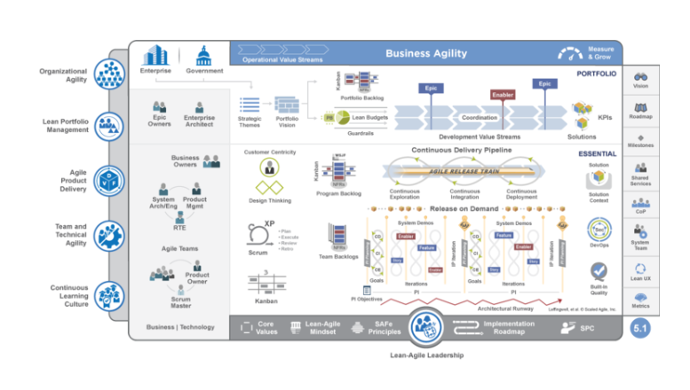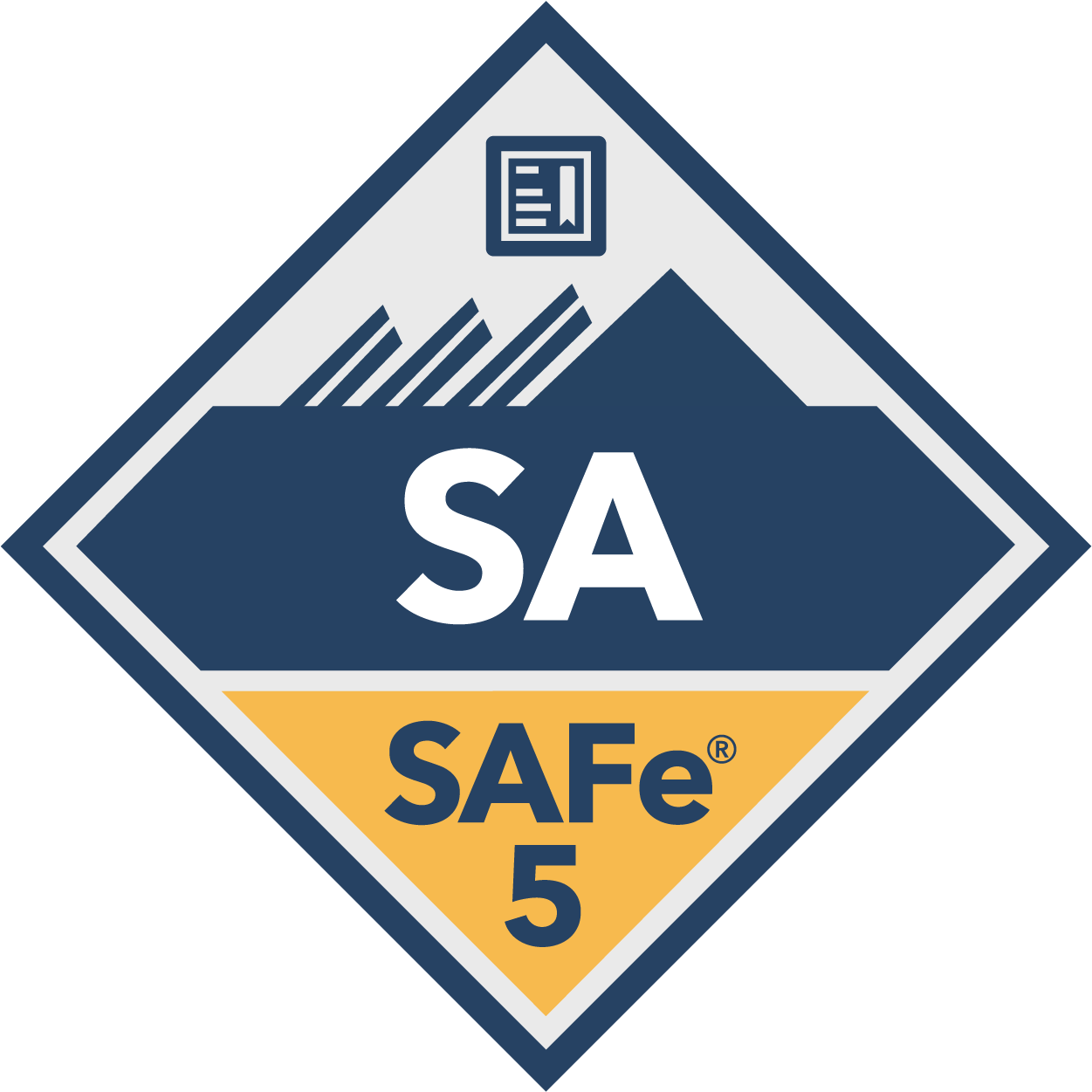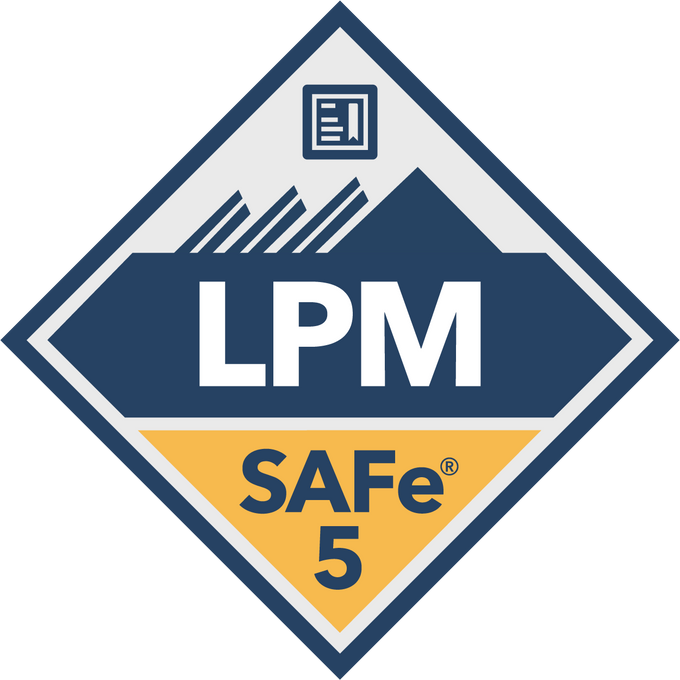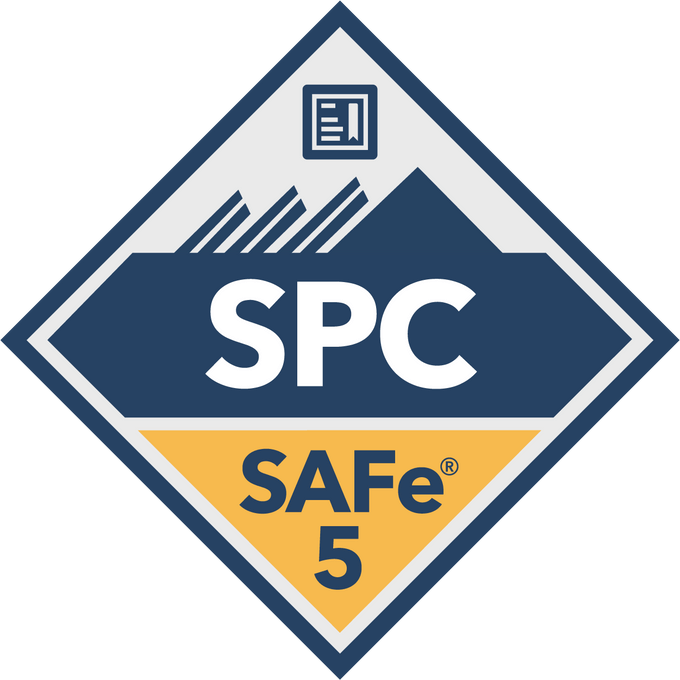What is SAFe?
The Scaled Agile Framework® (SAFe®) is a set of organizational and workflow patterns for implementing agile practices at an enterprise scale. The framework is a body of knowledge that includes structured guidance on roles and responsibilities, how to plan and manage the work, and values to uphold.
SAFe promotes alignment, collaboration, and delivery across large numbers of agile teams. It was formed around three primary bodies of knowledge: agile software development, lean product development, and systems thinking.
As businesses grow in size, SAFe provides a structured approach for scaling agile. There are four configurations in SAFe to accommodate various levels of scale: Essential SAFe, Large Solution SAFe, Portfolio SAFe, and Full SAFe.
They Principles are summarized in the following sections: (need help to apply them in your organization?)
 Dean Leffingwell and Drew Jemilo released SAFe in 2011 to help organizations design better systems and software that better meet customers’ changing needs. At that time, teams used traditional project management processes to deliver software. But as the need to rapidly respond to changing market conditions increased, new frameworks emerged to help businesses improve solution delivery across their enterprises, and SAFe was born. Today, SAFe is one of the most popular scaled agile delivery frameworks, and SAFe’s worldwide community of practitioners continue to evolve it.
Dean Leffingwell and Drew Jemilo released SAFe in 2011 to help organizations design better systems and software that better meet customers’ changing needs. At that time, teams used traditional project management processes to deliver software. But as the need to rapidly respond to changing market conditions increased, new frameworks emerged to help businesses improve solution delivery across their enterprises, and SAFe was born. Today, SAFe is one of the most popular scaled agile delivery frameworks, and SAFe’s worldwide community of practitioners continue to evolve it.
1.
Take an economic view Delivering the ‘best value and quality for people and society in the shortest sustainable lead time’ requires a fundamental understanding of the economics of building systems.
Everyday decisions must be made in a proper economic context.
2.
Apply systems thinking deming observed that addressing the challenges in the workplace and the marketplace requires an understanding of the systems within which workers and users operate.
3.
Assume variability; preserve options Traditional design and life cycle practices encourage choosing a single design-and-requirements option early in the development process.
Unfortunately, if that starting point proves to be the wrong choice, then future adjustments take too long and can lead to a suboptimal design.
A better approach is to maintain multiple requirements and design options for a longer period in the development cycle.
4.
Build incrementally with fast, integrated learning cycles developing solutions incrementally in a series of short iterations allows for faster customer feedback and mitigates risk.
Subsequent increments build on the previous ones.
5.
Base milestones on objective evaluation of working systems.
Business owners, developers, and customers have a shared responsibility to ensure that investment in new solutions will deliver economic benefit.
6.
Visualize and limit WIP, reduce batch sizes, and manage queue lengths Lean enterprises strive to achieve a state of continuous flow, where new system capabilities move quickly and visibly from concept to cash.
7.
Apply cadence, synchronize with cross-domain planning Cadence creates predictability and provides a rhythm for development.
Synchronization causes multiple perspectives to be understood, resolved, and integrated at the same time
8.
Unlock the intrinsic motivation of knowledge workers Lean-Agile leaders understand that ideation, innovation, and employee engagement are not generally motivated by individual incentive compensation.
Such individual incentives can create internal competition and destroy the cooperation necessary to achieve the larger aim of the system.
Providing autonomy and purpose, minimizing constraints, creating an environment of mutual influence, and better understanding the role of compensation are keys to higher levels of employee engagement.
9.
Decentralize decision-making Achieving fast value delivery requires decentralized decision-making.
This reduces delays, improves product development flow, enables faster feedback, and creates more innovative solutions designed by those closest to the local knowledge.
10.
Organize around value Many enterprises today are organized around principles developed during the last century. In the name of intended efficiency, most are organized around functional expertise. But in the digital age, the only sustainable competitive advantage is the speed with which an organization can respond to the needs of its customers with new and innovative solutions.
These solutions require cooperation amongst all the functional areas, with their incumbent dependencies, handoffs, waste and delays.
Instead, Business Agility demands that enterprises organize around value to deliver more quickly. And when market and customer demands change, the enterprise must quickly and seamlessly reorganize around that new value flow.
Want to Know More?
Here is our next upcoming courses!

LEADING SAFe®
Foundation Level - Learn how to lead effectively in remote environments.

LEAN PORTFOLIO MANAGER
Intermediate Level - To provides guidance and tools needed to work effectively

SAFe® IMPLEMENTATION
Advanced Level - Ready to lead a Lean-Agile transformation?
To be announced the next date